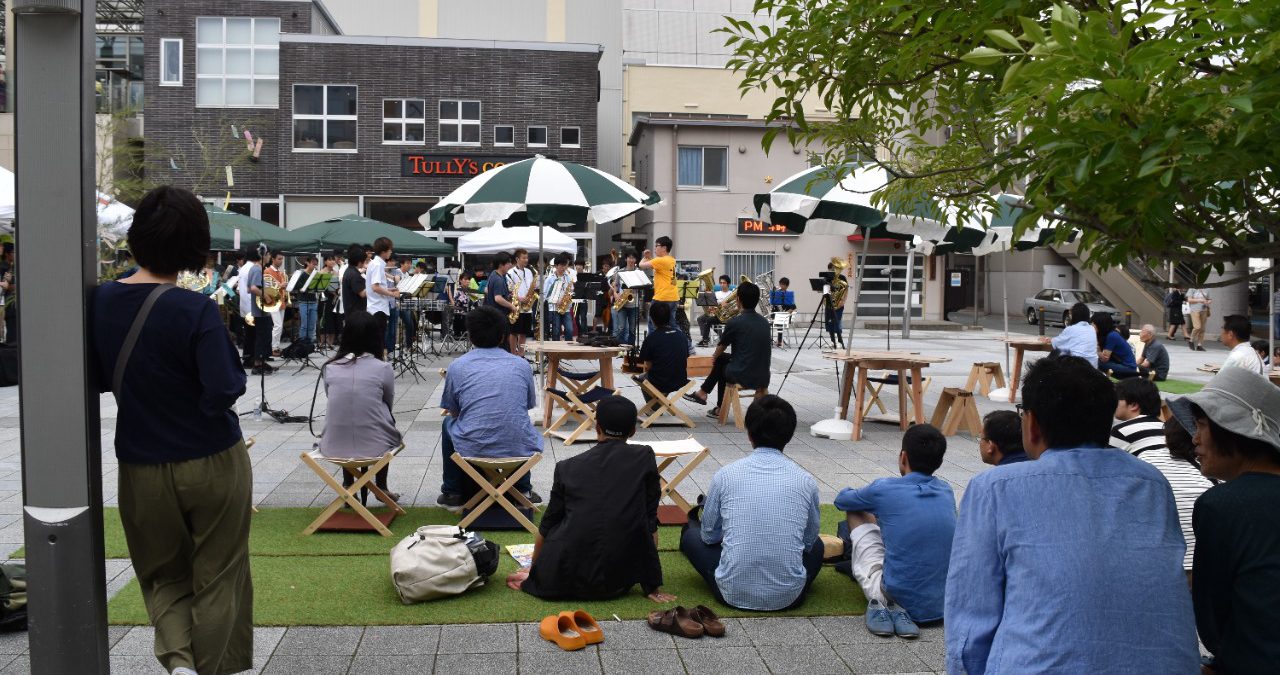
Keep up with our latest news and projects!

The city of Toyohashi is located in the Chubu region of Japan, with a population of approximately 380,000 people. Its city centre is in transition, as are those of many other Japanese cities, and is gradually shifting toward the revitalisation of areas where people live, work, and socialise. Geographically scattered public facilities, redevelopment facilities, and public spaces are becoming interconnected thanks to the development of several important streets. Each activity, supported by a deep sense of civic pride, is now being developed into a series of advanced place-making initiatives.
The authors of this article are participating in this effort as designers of the ‘Street Design Project’ and as advisors and secretariats of the ‘Toyohashi Machinaka Conference’.
Toyohashi is home to the Port of Mikawa, which is famous for being the leading automobile port in Japan. Until the 1980s, the city centre was always crowded with people. On weekdays, office workers came and went on and many shoppers lined the streets, while at night and on holidays, port and factory workers visited the town from the harbour to enjoy a meal and some entertainment. There were many facilities supporting civil and cultural activities, such as movie theatres, department stores, bookstores, and audio shops. In addition, a pedestrian paradise was created on the main street during the holidays and a summer night market was held for a month in a park near the city centre.
However, like most Japanese cities, the city sprawl, the location of large stores in the suburbs, and the relocation of some public facilities gradually reduced the number and consumption of visitors in the city centre. With time, the number of commercial facilities also decreased. Various events once held in the city centre were forced to choose between shrinking or seeking economies of scale, and some events moved to parks away from the city centre. Even though the traditional tram service was maintained, the number of passengers gradually dwindled.
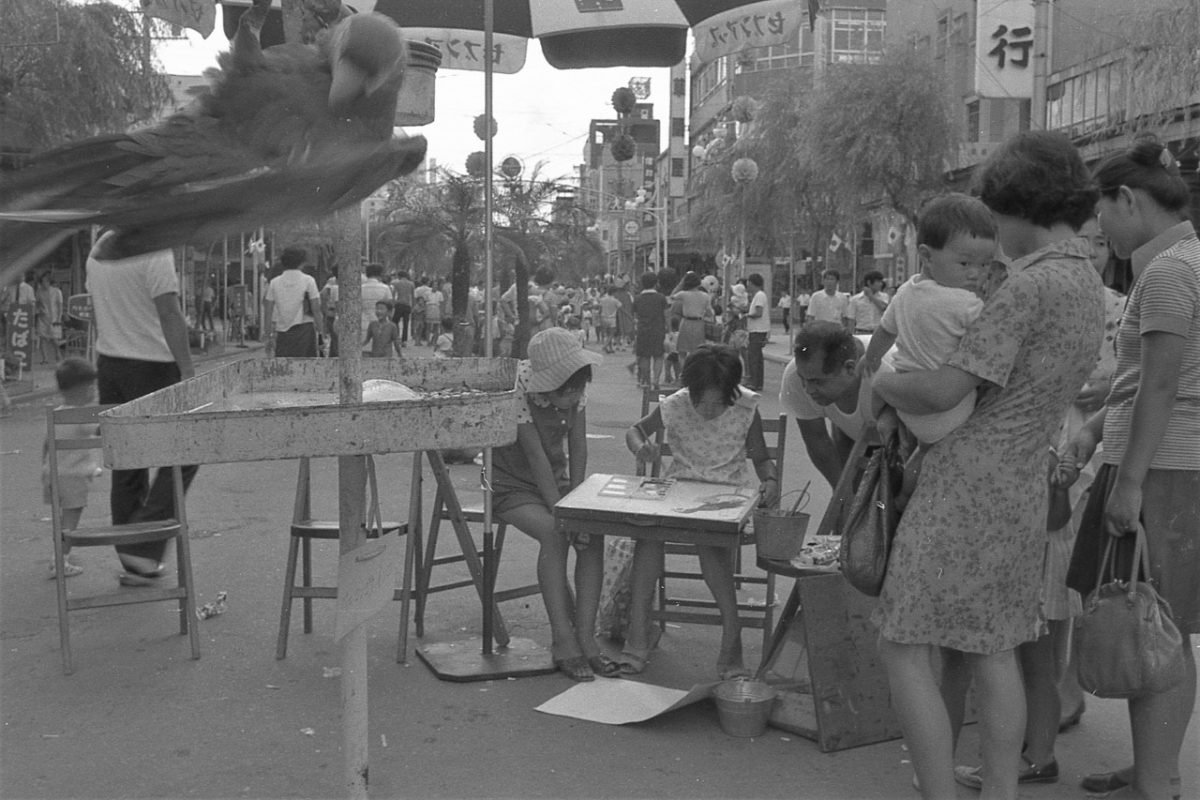 Figure 1. The pedestrian paradise in 1970.
Figure 1. The pedestrian paradise in 1970.
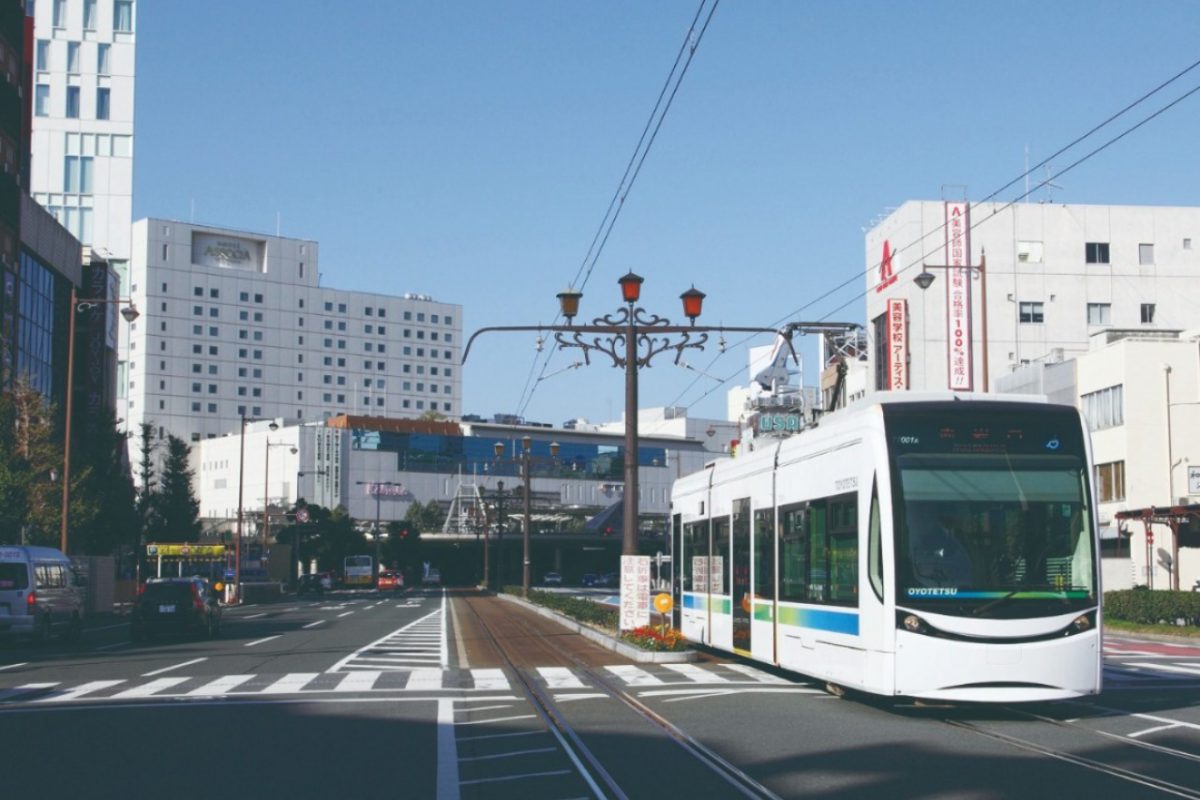
In Japan, the Central City Revitalisation Law was amended in 2006 and, as a result, local governments made various efforts to revitalise their city centres. In the city of Toyohashi, the local government and local estate company began redevelopment projects in the central city area in the early 2000s. For example, they installed pedestrian decks and plazas in front of the station and developed an art and cultural theatre and a childcare support centre. However, these facilities are geographically dispersed and could therefore not be expected to be used as a network.
However, in Toyohashi, concurrent with these improvements, several activities including existing public spaces were brought back to life simultaneously by various departments of the local government and the private sector. Public screenings were staged at annual film festivals, held by citizens, and the local government revived the pedestrian paradise, which had not been utilised for a long time. Local shopping streets with buildings built on the water in the 1960s started to hold art events and ‘rainy-day markets’ that make use of their unique cityscape. These movements were implemented as the public and private sectors each independently discovered the value of public spaces and started moving on their own. There was no overarching initiative to encourage these ventures during this period; it was the accumulation of cultural and civic pride that encouraged each subsequent activity.
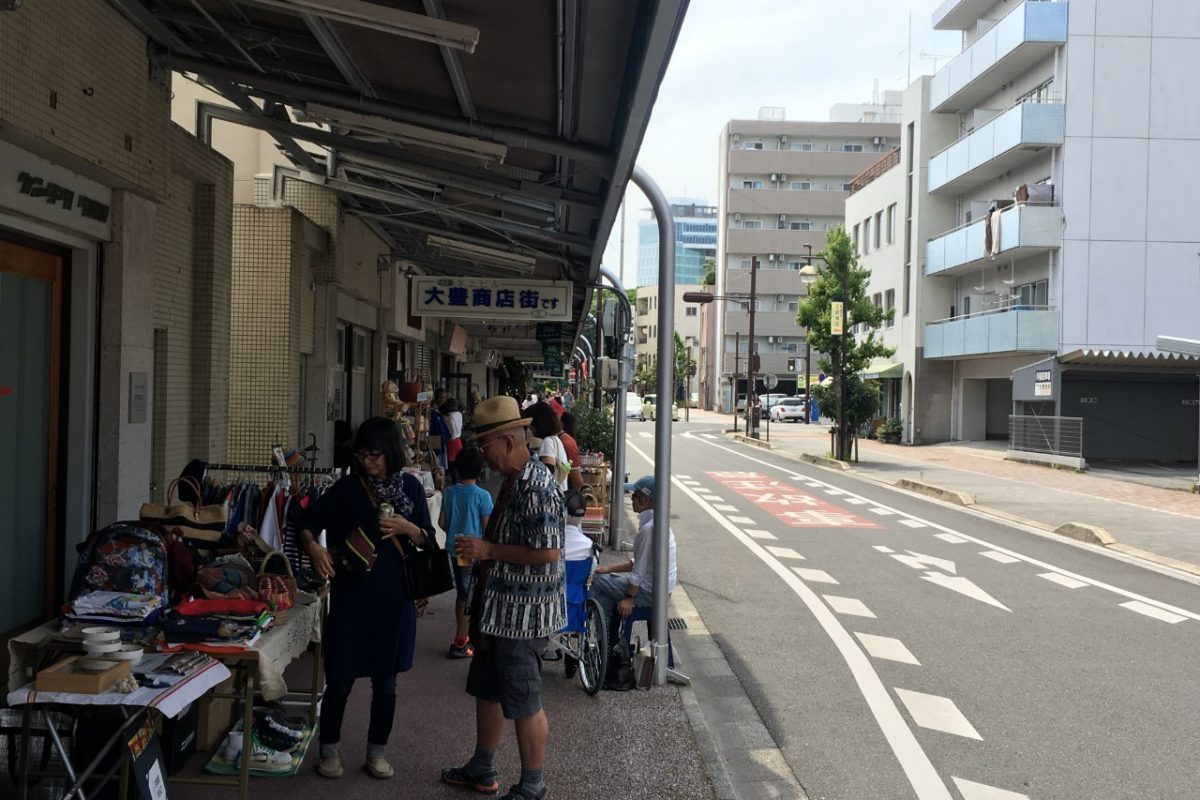 Rainy-day market.
Rainy-day market.
The local government, local shopping streets, and local businesses welcome these movements but share a sense of apprehension concerning their sustainability. Accordingly, two projects have been launched.
One is the ‘Street Design Project’. This project is a redevelopment project for the streets that connect public spaces, which have been individually developed and are geographically dispersed. The other is the ‘Toyohashi Machinaka Conference.’ This is a place management organisation that was formed in response to the new redevelopment project and public space development.
The ‘Street Design Project’ is an initiative that has been active since 2015. Led by the local government, it is a project to reconfigure the district’s main streets into safe, pedestrian-friendly spaces. Having selected several routes that connect public facilities and bases, they aim to improve the quality of these walking spaces to increase the convenience of movement around downtown areas.
During the design process, there were various opinions offered up by concerned citizens, such as how to handle the trees on the street, where to ride bicycles, and the safety and use of the sidewalks. In response, the planning team adopted a workshop process centred on dialogue between citizens, conducted field surveys with citizens, explained and improved the plan using models, and adapted the landscape through mock-ups. To date, some sections of the new walking area have already been constructed. The texture of the pavement was changed, bicycle lanes were implemented, and new benches and activity spaces were installed.
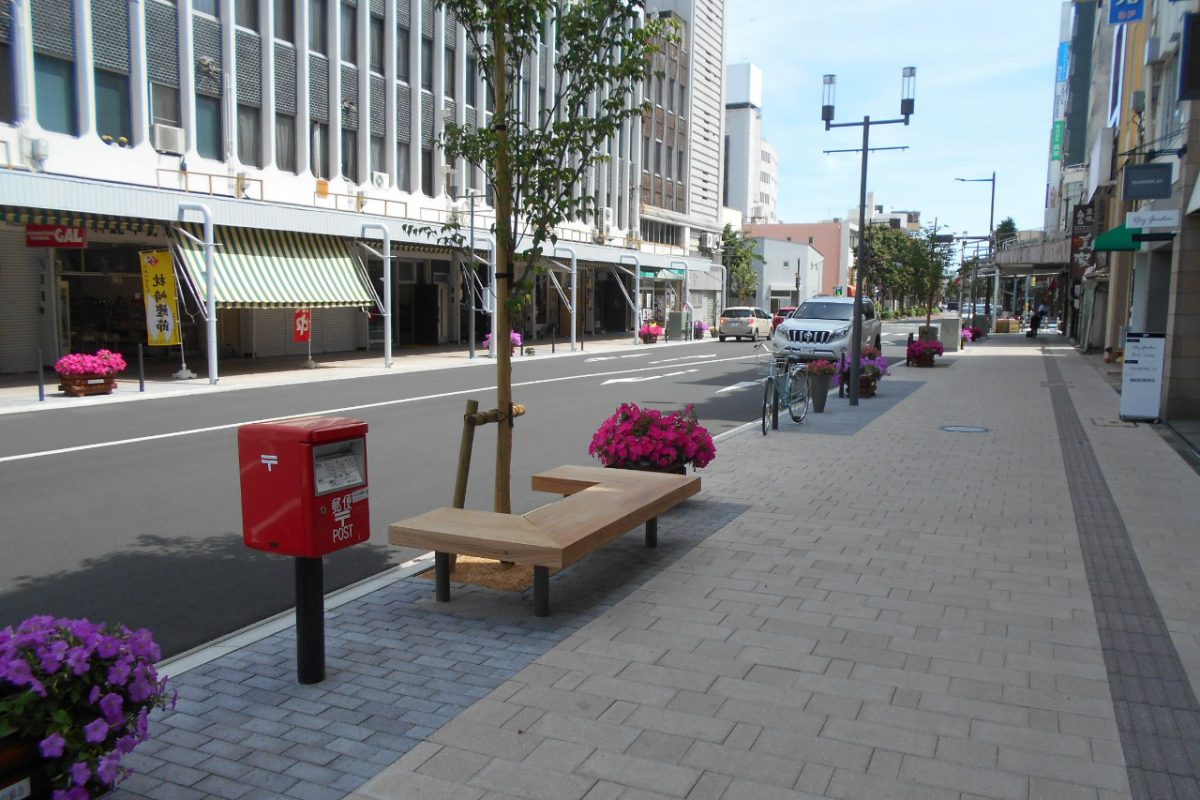 Kayamachi Street.
Kayamachi Street.
The ‘Toyohashi Machinaka Conference’ is a place management organisation that was established in 2018. This organisation consists of representatives from major local companies, residents’ associations, and universities. The mission of the organisation is to visualise the future of the area and to promote various initiatives to improve the value of the area. One of their investigations concluded that there are many public spaces in the city that were not being used effectively. They challenged themselves to collect as many examples as possible, including empty courtyards, sidewalks, private sites, vacant buildings, etc, to organise new rules for using each space, and to connect the places with interested stakeholders. In an experiment in 2018, various programmes, such as a lunch mall, a limited-time rest area, and an automobile exhibition were implemented, showing the potential of each public space.
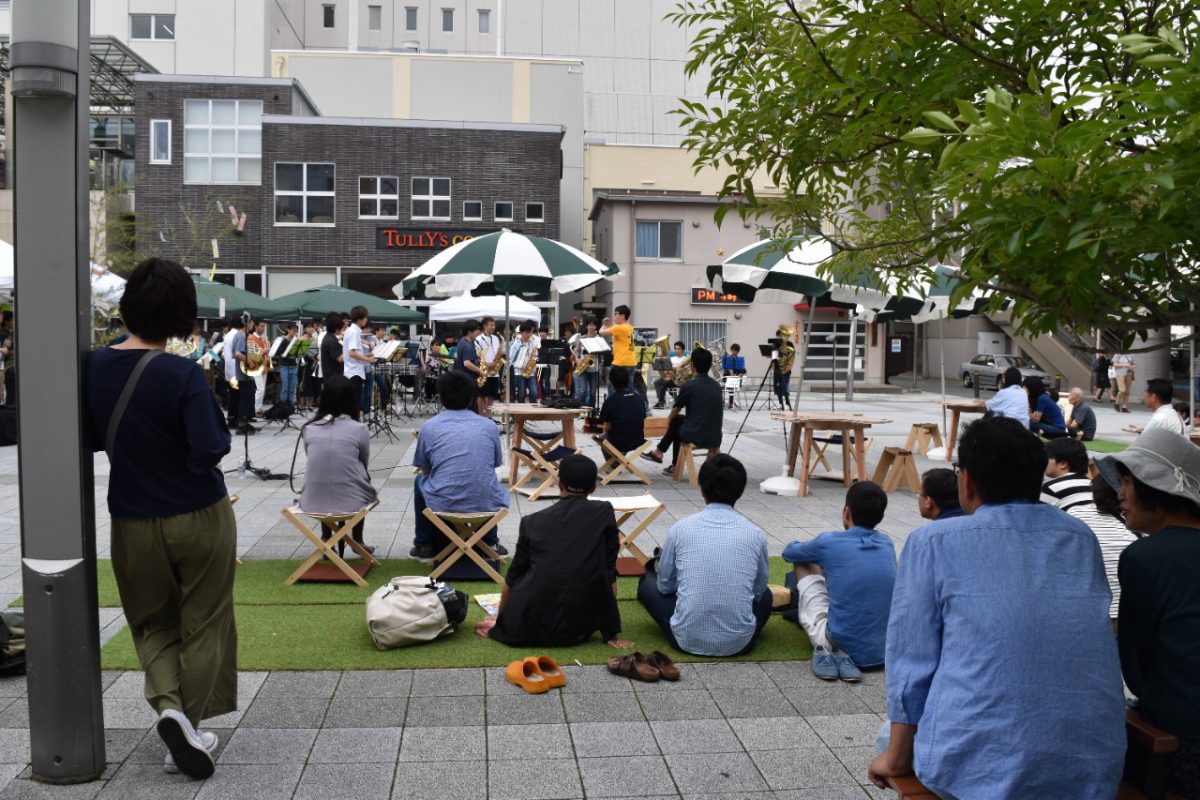 Social experiment of public space use (square market).
Social experiment of public space use (square market).
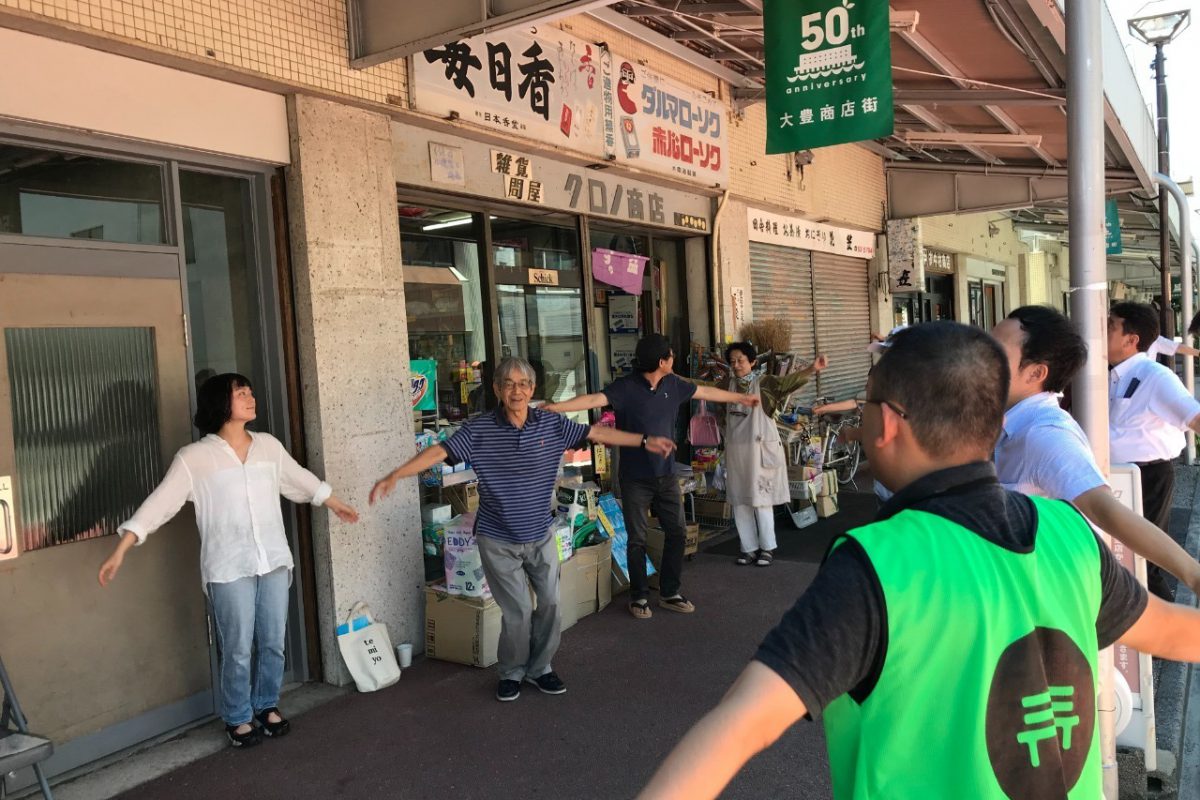 Social experiment of public space use (street calisthenics).
Social experiment of public space use (street calisthenics).
By simultaneously promoting the connection between public space and activities, a mechanism was created to establish a sustainable and autonomous network of individual activities. Neither the connected public spaces nor the initiatives that support activities would work without the enthusiasm of each individual player, and the communication between them. Placemaking organisations and local governments have cherished the opportunity to carry out the dialogues we need to build sustainable structures and spaces that take advantage of the diversity of people. Together, these initiatives are starting to create a virtuous cycle that is fostering a new sense of civic pride for the citizens of Toyohashi.